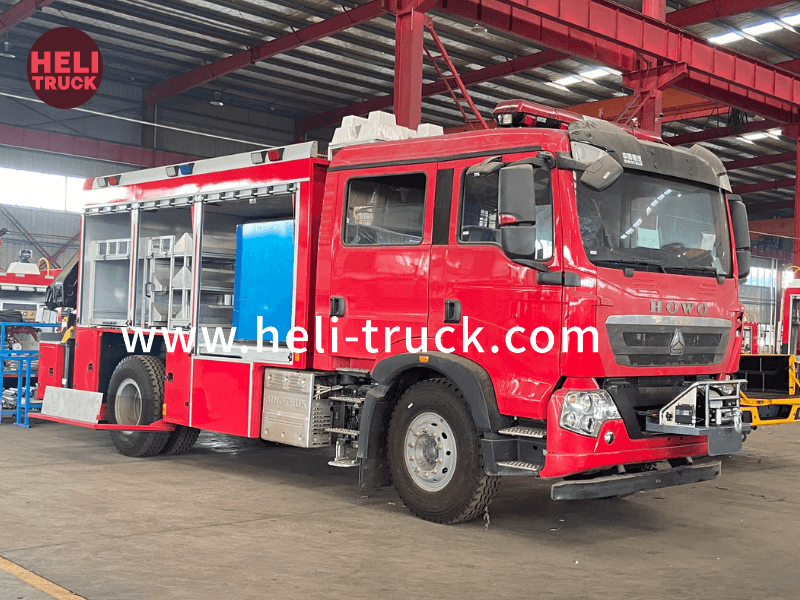Maximizing Efficiency and Performance Understanding Work Truck Capacity

Introduction
Work trucks are essential vehicles in various industries, providing the necessary transportation and support for carrying out tasks efficiently. From construction sites to delivery services, work trucks play a crucial role in facilitating operations and increasing productivity. One key aspect that significantly impacts the effectiveness of work trucks is their capacity. Understanding work truck capacity is essential for maximizing efficiency, safety, and performance in various work settings. In this article, we will delve into the importance of work truck capacity, factors affecting capacity, how to determine the right capacity for your needs, and tips for optimizing work truck performance.
Importance of Work Truck Capacity
Work truck capacity refers to the maximum load or weight that a truck can carry safely and efficiently. Having a clear understanding of a work truck's capacity is crucial for several reasons:
1. Safety: Overloading a work truck beyond its capacity can lead to accidents, mechanical failures, and increased wear and tear on the vehicle. By adhering to the specified capacity limits, operators can ensure the safety of themselves and others on the road.
2. Efficiency: Operating a work truck within its capacity limits allows for optimal performance and fuel efficiency. Overloading a truck can strain the engine, transmission, and suspension system, leading to increased fuel consumption and decreased overall efficiency.
3. Compliance: Many jurisdictions have regulations in place regarding the maximum weight limits for commercial vehicles. By understanding and adhering to these regulations, operators can avoid fines and penalties while ensuring compliance with the law.
Factors Affecting Work Truck Capacity
Several factors influence the capacity of a work truck, and it is essential to consider these factors when determining the appropriate load for a specific vehicle. Some of the key factors affecting work truck capacity include:
1. Gross Vehicle Weight Rating (GVWR): The GVWR is the maximum allowable weight for a fully loaded truck, including the vehicle's weight, passengers, cargo, and accessories. Exceeding the GVWR can compromise the vehicle's safety and performance.
2. Payload Capacity: Payload capacity refers to the maximum weight of cargo and passengers that a work truck can safely carry. It is essential to consider the payload capacity when loading a truck to ensure that it does not exceed the recommended limits.
3. Axle Weight Limits: Work trucks have specific weight limits for each axle to distribute the load evenly and prevent overloading. Exceeding the axle weight limits can cause damage to the vehicle's suspension system and tires.
4. Towing Capacity: For trucks equipped with towing capabilities, the towing capacity indicates the maximum weight that the vehicle can tow safely. Exceeding the towing capacity can put undue stress on the engine and transmission, leading to mechanical issues.
Determining the Right Capacity for Your Needs
To determine the right work truck capacity for your specific needs, consider the following steps:
1. Evaluate Your Typical Cargo: Start by assessing the typical weight and volume of cargo you will be transporting using the work truck. Consider the heaviest and bulkiest items you will need to carry to determine the payload capacity required.
2. Factor in Passenger Weight: If the work truck will be transporting passengers in addition to cargo, account for the combined weight of passengers when calculating the total load. Ensure that the payload capacity can accommodate both passengers and cargo safely.

3. Consider Future Needs: Anticipate any potential changes in your cargo requirements or business operations that may impact the work truck's capacity. Choosing a truck with a slightly higher capacity than your current needs can provide flexibility for future growth.
4. Consult Manufacturer Specifications: Refer to the manufacturer's specifications and guidelines for the work truck model you are considering. Pay close attention to the GVWR, payload capacity, axle weight limits, and towing capacity to ensure compliance and safety.
Optimizing Work Truck Performance
Once you have determined the right capacity for your work truck, follow these tips to optimize performance and efficiency:
1. Regular Maintenance: Keep the work truck well-maintained by following the manufacturer's recommended maintenance schedule. Regular inspections, oil changes, tire rotations, and servicing can help prevent breakdowns and ensure optimal performance.
2. Proper Loading: Distribute the cargo evenly and securely within the truck bed to maintain balance and stability. Avoid overloading one side of the truck, as this can affect handling and increase the risk of accidents.
3. Drive Responsibly: Practice safe driving habits, such as observing speed limits, avoiding sudden stops and starts, and maintaining a safe following distance. vacuum truck for sale can help reduce wear and tear on the vehicle and improve fuel efficiency.
4. Upgrade Equipment: Consider investing in accessories and equipment that can enhance the work truck's performance, such as upgraded suspension systems, towing packages, or cargo management solutions. These upgrades can improve handling, towing capabilities, and overall efficiency.
Conclusion
Understanding work truck capacity is essential for ensuring safety, efficiency, and performance in various work environments. By considering factors such as GVWR, payload capacity, axle weight limits, and towing capacity, operators can determine the right capacity for their specific needs and optimize the performance of their work trucks. Adhering to capacity limits, following maintenance schedules, and practicing safe driving habits are key steps in maximizing the efficiency and longevity of work trucks. By prioritizing capacity considerations and implementing best practices, operators can enhance productivity and safety while utilizing work trucks to their full potential.
